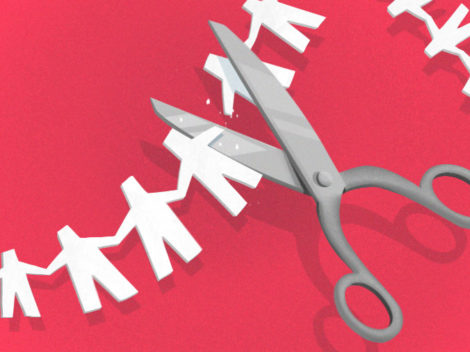The global pandemic has been hard on restaurants. What has made the transition easier for restaurants to reopen is the startup community’s response to their challenges.
Subscribe to the Crunchbase Daily
Crunchbase News talked to a dozen people in the restaurant app scene, including startup founders and venture capitalists, to see how they are helping restaurants add technology, in some cases for the first time, to their menu of options to get back to business.
In January, restaurant foot traffic was up nearly 2 percent compared to 2019, but by March had declined 60 percent, according to John Kelly, CEO at Zenreach, a company that connects online marketing to the traffic merchants experience in their stores.
“The low point came in the middle of April —when all of the states were in some kind of lockdown—with traffic down 75 percent,” he said in an interview. “Those are dramatic numbers, and the country has never seen anything like that.”
Since then, traffic has come back up to 50 percent — still low, but a positive sign.
Although states are allowing restaurants to reopen—at reduced capacity—for dine-in customers, the experts we spoke with all said if restaurants don’t adopt some type of technology, such as online ordering and delivery, or get creative with new revenue streams, they may not survive.
Because certain menu items aren’t designed to sit in take-out containers for any length of time, less than 10 percent of traditional dine-in restaurants had significant take-out or delivery business pre-COVID. So when COVID hit, dining went down to zero initially, leaving restaurants to pivot to an existing take out business, said Tim McLaughlin, CEO at mobile payments startup GoTab.
As restaurant app startups are helping the community, investors are seeing the potential for the future of these offerings. We looked at venture-backed startups within the space and found that $800 million was invested in 49 deals in 2020, as of Sept. 22.* While the list of investments is not exhaustive, you can see that compared to the $1.6 billion invested in 2019, it seems the funding amounts are on par in 2020.
The largest deal among the 49 this year belonged to restaurant management startup Toast, which announced $400 million in new funding in February, boosting its valuation to $4.9 billion.

Below are highlights from the conversations we had with founders and VCs about how certain technology is assisting restaurants in this current environment. Within those conversations emerged three or four categories of apps or platforms where we saw activity, depending on who you ask: online ordering, operations, delivery and data.
Online ordering
Numa, a text answering service and virtual receptionist platform, saw more restaurants turn to its phone-to-text offering when it became too costly to pay the fees associated with third-party delivery services. Many of those services take up to 30 percent of an order’s profit, CEO Tasso Roumeliotis told Crunchbase News.
Restaurants were using Numa to process text food orders, take credit card information, and message the customer when the order was ready. Within the platform of small businesses, the company saw a 500 percent increase in the volume of orders and texting during the pandemic.
“About two-thirds of calls are missed by small businesses because they are busy,” he said. “We are able to rescue about half of the inbound calls. Instead of missing the call, they are turning them into customers.”
SpotOn President RJ Horsley said that in mid-March, his payments company also started making its online ordering solution accessible to any business. In addition, because dine-in capacity was an issue, it was about filling each table with the right customers.
“You can’t just rely on walk-ins to fill the tables each night. You have to enable ordering through the phone and provide a contactless experience if they do come in,” he said. “That is what the consumer is demanding, and the experience now has to expand beyond the four walls of the restaurant.”
Chirag Chotalia, partner at VC firm Threshold, is one of the investors in mobile operations platform BentoBox. He said restaurants are establishing online presences and websites and order-ahead functionality are even more important now, as is generating revenue in new ways.
He sees fine-dining restaurants, which had very little take-out and delivery, offering meal kits so people could make their favorite three-course meals at home until they could go back to dining in. He also sees them getting into merchandise, such as selling bottles of iconic hot sauce and T-shirts.
To help restaurateurs tap into that creativity, BentoBox created a thought leadership space for best practices.
Operations
Chang Xu, partner at Basis Set Ventures, was one of the investors in Workstream’s seed round in 2018. Workstream provides hiring and onboarding software to restaurants, especially quick-service restaurants, that were resuming operations and looking for contactless tools.
“It is clear that restaurants are reaching for technology because they need to coordinate their workforces so they don’t have employees overlapping, but also to have scheduling software and employee engagement tools,” she said. “I see a lot of interesting things coming out of this.”
Meanwhile, as people were staying home, they got out of the habit of eating out, Bo Peabody, co-founder of restaurant discovery app Seated, said. His app helps incentivize dining in, and he said he is seeing an interest from restaurants trying to figure out how to get people back inside to eat.
Peabody knows firsthand what that is like. He and his family recently returned to New York after six months away, and they too, needed to make the mental leap to going back out again, he said. He sees one of those solutions being outdoor dining, perhaps “an extraordinary legacy” of the pandemic.
“Many restaurants have already built custom tables, awnings and a stage for bands, and that has already been approved by the government for next year,” Peabody said. “All of these outdoor setups came as a necessity, but will now be a renaissance of alfresco dining.”
Delivery
When people weren’t able to get out, many relied on food delivery. Virtual Kitchen, which builds delivery-optimized kitchens, and curbFlow, a platform that partners with on-demand delivery companies such as DoorDash, helped restaurants quickly get up-and-running with delivery.
“This was the future we had talked about already, but consumer preference for on-demand and food delivery is shaping everything these days, as they like the convenience of shopping online and having it fulfilled with delivery,” said Ken Chong, co-founder and CEO at Virtual Kitchen.
And curbFlow found a “sweet spot” in providing drivers with an easy way to identify curb space in front of merchants’ locations so drivers could pick up the food deliveries, said founder Ali Vahabzadeh. The company provides a computer vision device that merchants host on their front window to communicate inventory of available curb space.
“We have been floored by the response from merchants wanting to use our free device so drivers can better coordinate,” Vahabzadeh said. “Now, cars aren’t double-parked and someone isn’t waiting around producing emissions while they look for parking.”
Data
On the data side, Galley Solutions helps restaurants, caterers and other types of food businesses collect and understand the food data behind their operations.
In that respect, the company is seeing a higher level of concern for understanding efficiencies, said founder Ian Christopher. Restaurants often run off of spreadsheets, so Galley helps leverage data to build workflows for culinary teams, such as inventory management and procurement.
“Understanding food costs prior to COVID-19 was a nicety, not a necessity,” he said. “We think most restaurants don’t understand menu engineering, food costs and profit margin, and don’t have data accessible to make thoughtful and profitable decisions.”
ZenReach also uses data to help drive in-store visitors. Its software is a layer on top of a restaurant’s guest Wi-Fi, so when someone comes in the phone pings the Wi-Fi and provides traffic numbers, Kelly said.
When the customer uses an email address to sign into the Wi-Fi, the company then pairs that with public data to provide demographic data the merchant can use for advertising and targeted messages.
“Restaurants willing to adopt proper messaging, along with safety precautions and delivery, have fared much better than those who have not,” Kelly said.
Where do we go from here?
Meanwhile, Alan Hayman, president of Hayman Consulting Group, said restaurants that have been tuned in to delivery or takeout all along have the best opportunity to come out of this, but there is still time to be so, as long as the restaurant has a menu that can survive that take-out container.
“Those that have a menu that can travel, but have not done delivery, need to change quickly if they haven’t already,” he said. “Everyone is going to have to change, regardless, because consumer habits are going to change. Delivery and takeout operating modes will be important for the next year.”
Even with all of these capabilities, Brad Svrluga, co-founder and general partner at Primary Venture Partners, is waiting to see something new and unique help restaurants get back to business.
“There hasn’t been an answer to New York opening at 25 percent capacity and helping a restaurant with that,” he said. “You can do a much bigger order-ahead business, and that helps fill the hole but it is not creative. It is going to take a while to get back to normal, especially for a restaurant in a business-dominated neighborhood. They have to find ways to be more efficient or they won’t stay afloat.”
*Chart methodology: Startups included in the dataset were categorized as “Restaurant” or “Food Delivery,” as well as all companies with “Payments” or “Apps” that listed “Restaurant” in their descriptions.
Illustration: Li-Anne Dias

Stay up to date with recent funding rounds, acquisitions, and more with the Crunchbase Daily.






![Illustration of a guy watering plants with a blocked hose - Global [Dom Guzman]](https://news.crunchbase.com/wp-content/uploads/quarterly-global-3-300x168.jpg)
67.1K Followers